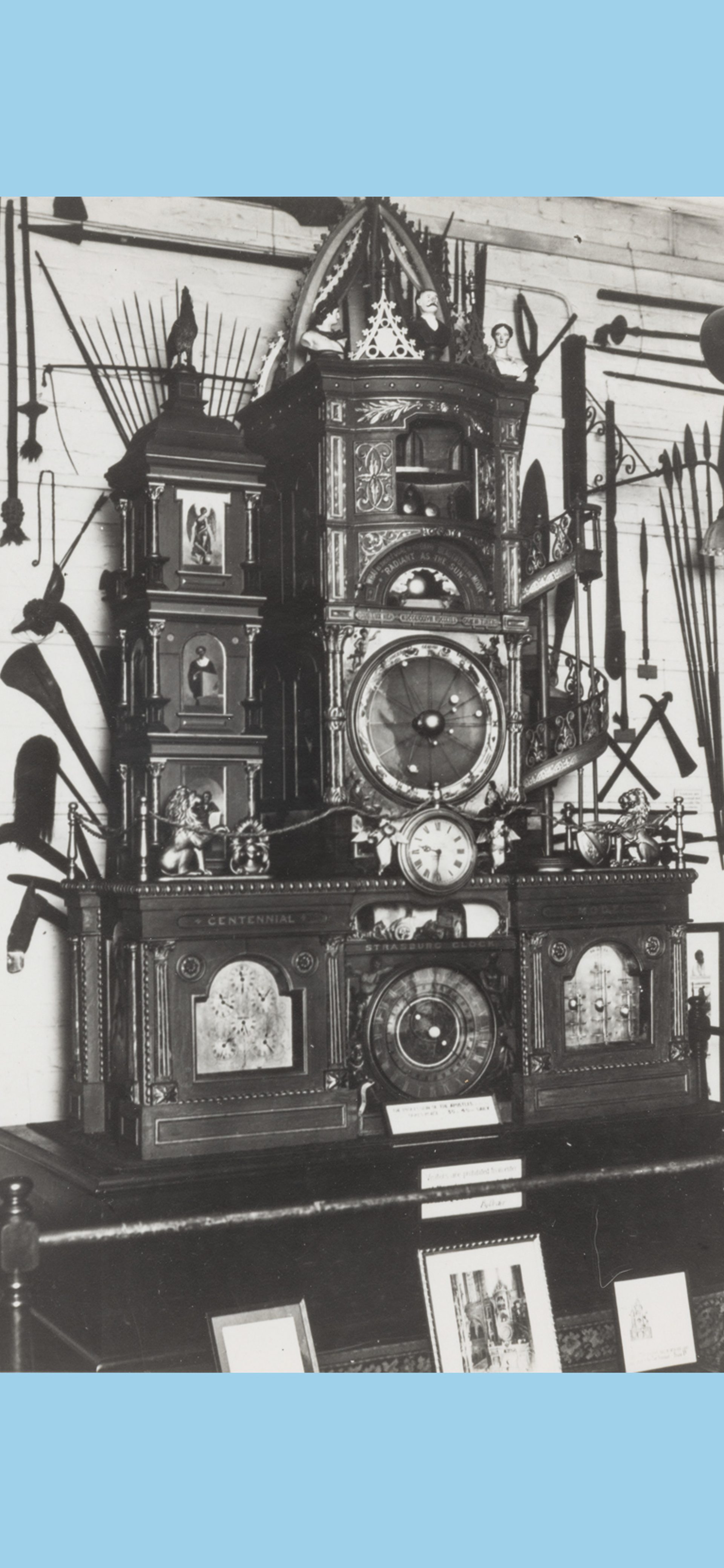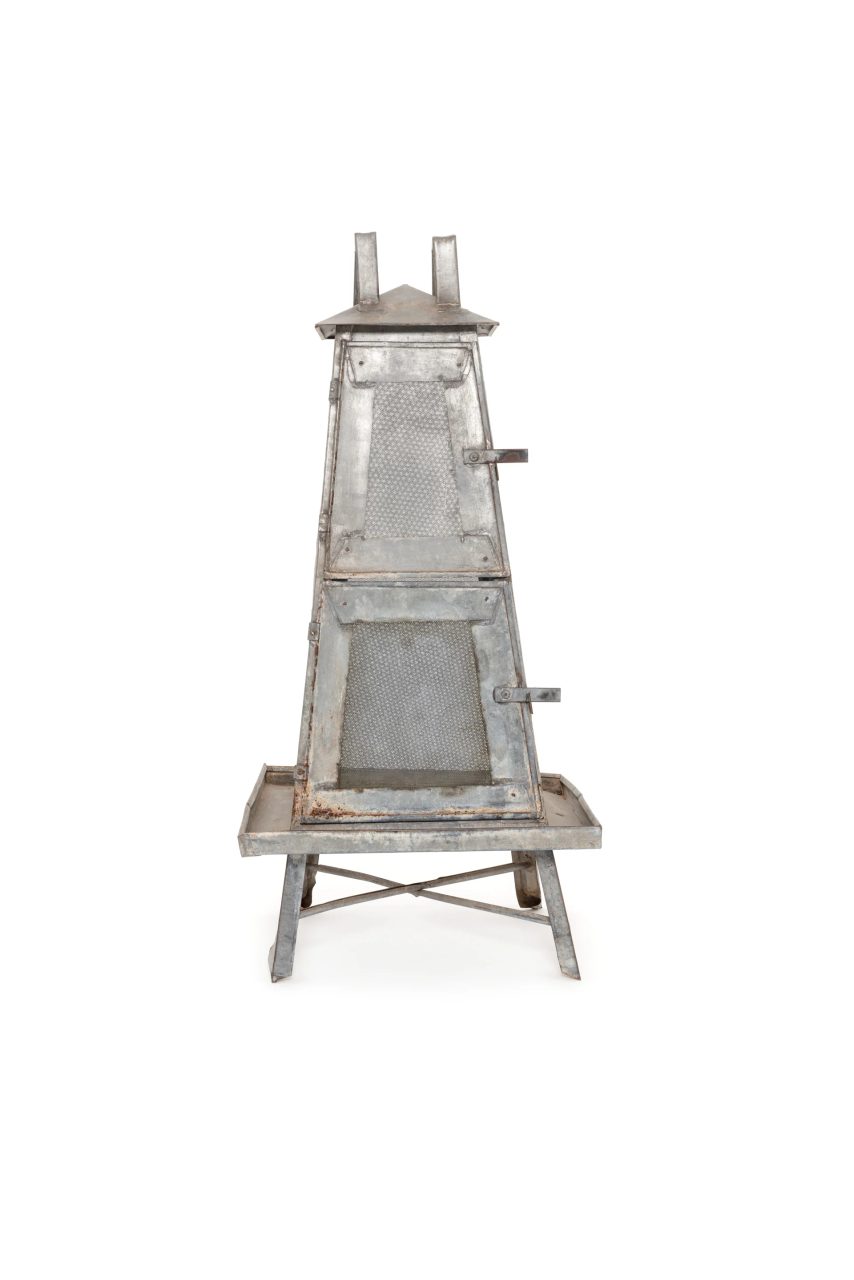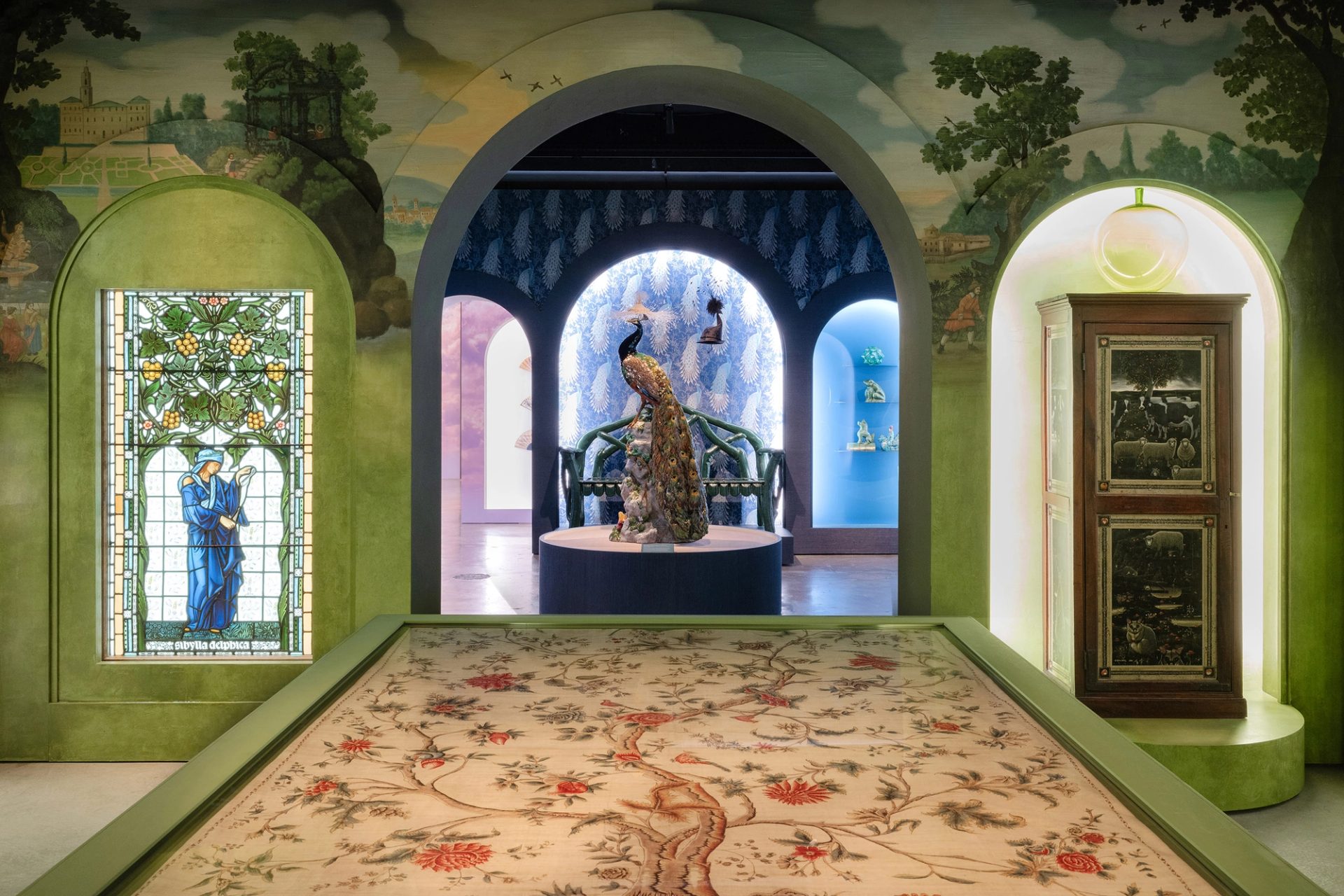The Creative Impulse

I was eight years of age, going on nine. Still in short pants. I had travelled to Sydney once before on a family holiday to Bondi, but there was a more significant purpose to this second visit. I was being despatched to boarding school, ostensibly to receive a better education than the one available at the Convent of Mercy in Brewarrina, a pipsqueak town on the Barwon River, 787 kilometres north-west of the Big Smoke.
Today my home town is best known for the local ancient fisheries, an intricate series of stone weirs and ponds the Traditional Owners first devised tens of thousands of years ago. Not that we learned about this ingenuity in school. An image of the Brewarrina fish traps, photographed sometime between 1880 — 1923 (Object No. 85/1286-721), was one of the first objects selected as we embarked upon curating 1001 Remarkable Objects.
Brewarrina was, at the time I departed for school, simply the farthest-flung destination on the New South Wales railway network, the end of the line as ‘twere.
I left at 8.20am on a sunny Friday morning and arrived in Sydney 23 hours later, met by my grandmother and my uncle, her elder son. I was to be delivered to my new school the following Monday morning and, by way of diversion, was taken to what was then known as the Technological Museum in Harris Street, Ultimo. And it was there that I first sighted the ‘Strasburg Clock model’ (Object No. A44), which fascinated me as it has generations of kids for over a century; perhaps the most loved and best remembered of what is now known as the Powerhouse Museum’s eclectic holdings.
Apart from the fact that it had been copied from an illustration of an astronomical clock in Strasbourg Cathedral, France, this mechanical marvel had no significant connection with the eponymous city teetering on the border of Germany, the de facto capital of Alsace.
But performance trumped provenance as the fabled timepiece went into full operational mode. On the hour a cock popped out, crowed three times as specified in the Bible, heralding a procession of 12 carved wooden Apostles across an upper level. Further figures, indicative of the four ages of man, materialised below in an area flanked by two chubby-cheeked pink cherubs with slender limbs and heads like sumo wrestlers.
Cometh the hour, the clock was daily surrounded by slackjawed youngsters panting to experience the show, the bells and whistles and clank of the mechanism.
From the day in 1890 when it was acquired by the New South Wales government and exhibited, first in the Domain and subsequently in Ultimo, this delicious piece of late 19th-century whizz-bangery quickly established itself as the Mona Lisa of Sydney, the mustn’t miss object in the collection. It still draws admirers today and this old favourite’s future pride of place in the soon-to-be remodelled Powerhouse Ultimo remains assured.
At one time or another, most human beings experience the creative impulse, a sudden desire to do something, anything, that expresses their individuality.
Such impulses can produce works of awe-inspiring beauty or stupefying banality. We will never know what impelled Richard Bartholomew Smith, the Sydney clockmaker who, at 25 years of age, spotted in either a pamphlet or a postcard, an illustration of the original clock in situ in Strasbourg, but he promptly set about constructing a large-scale working model copy, starting work on Anniversary Day (Australia Day) 1887 and completing his complex task two years later.
Almost immediately, his masterpiece was acquired for the people of New South Wales and until the arrival in 1954 of the Transparent Woman (Object No. H5789) was, in my view, the unchallenged star turn in the museum’s collection.
The term impulsive sometimes implies immediacy, or at least a speedy realisation of a bright idea. Smith completed his clock in just two years. But Antoni Gaudi’s masterpiece, the Expiatory Temple of the Sagrada Familia in Barcelona, Spain, remains unfinished 114 years after work commenced.
It can be sobering to look at an object and wonder what was in the creator’s mind when undertaking its making. Consider the obelisk-shaped Coolgardie safe displayed in 1001 Remarkable Objects (Object No. K1245). After the pyramids, the obelisk is the best known architectural invention of ancient Egypt. Did the bloke who created this particular utilitarian bush precursor of the domestic refrigerator have ancient Egypt in mind when he decided on an alternative to the usual bland rectilinear form of these contraptions? Or was he simply making do with existing shapes of the galvanised iron repurposed in its construction?
Making do. It’s something of an Aussie tradition and the Powerhouse Collection contains numerous objects that demonstrate this: quilts stitched from pieced-together samples of men’s worsted suits; fancy dress costumes made from calico flour bags; corner whatnots constructed from 100 or so empty wooden cotton reels; a garden planter fashioned from a busted truck tyre and painted white to resemble a swan; a telephone box made from an antique sedan chair in which two flunkeys once conveyed a lady in a hooped skirt through muddy London streets (Object No. H4763); or a teapot that began life as a tall tin full of Pasha Coffee & Chicory, now with a tapered spout soldered on to one side, a tin handle added to the other and a lid to be reincarnated as a bush teapot.
World War II with production of certain materials halted, what was a resident of Paddington, Sydney, to do when she craved a modish sunhat and lacked the metre-and-a-half of floral chintz or cretonne from which to construct one? Why, she made one from empty cigarette packs, an early manifestation of the process of recycling (Object No. 89/557). Does another like it exist? Or is this a solitary example of creative resourcefulness allied to singular skills and necessity?
Behind almost every object in 1001 Remarkable Objects lies a creative impulse of sorts. Why does ‘Baron’ Schmiedel, court prankster to Augustus of Saxony, have a mouse in his hat, another on his shoulder and a third dangling by a porcelain tail from his mouth in the splendid 1739 Meissen bust by Johann Joachim Kandler, the greatest of all European porcelain modellers (Object No. H5127)? Creative impulse or a bout of subversive naughtiness on the part of Herr Kandler? Or both?
The French writer Honore de Balzac observed that behind every great fortune lies a crime. Well, beyond every remarkable object, lies a story. Maybe even a creative impulse.
About the author
Leo Schofield AM is a former advertising professional, journalist, food critic, festival director, and trustee of arts and cultural organisations. As a writer he contributed to the The Australian, Sunday Telegraph, Australian Vogue, The Bulletin and The Sydney Morning Herald. Schofield is a former artistic director of the Melbourne International Arts Festival and Sydney Festival. He also jointly held the positions of artistic director of the 2000 Summer Olympics and the 2000 Summer Paralympics arts festivals. He was chair of the 1001 Curatorium.
Powerhouse Publication: 1001

This work is adapted from the latest Powerhouse Publication, 1001 Remarkable Objects. A celebration of the scale, breadth and relevance of the decorative arts and design collections held by Powerhouse Museum it catalogues the eponymous exhibition that opened at Powerhouse Ultimo, 26 August 2023. The publication opens with a series of 32 still life images produced by photographer Lauren Bamford in collaboration with art director and stylist Sarah Pritchard. It is punctuated by 15 narratives, from the four curators plus 11 Australian authors commissioned by Powerhouse to respond to one or more remarkable objects.


























